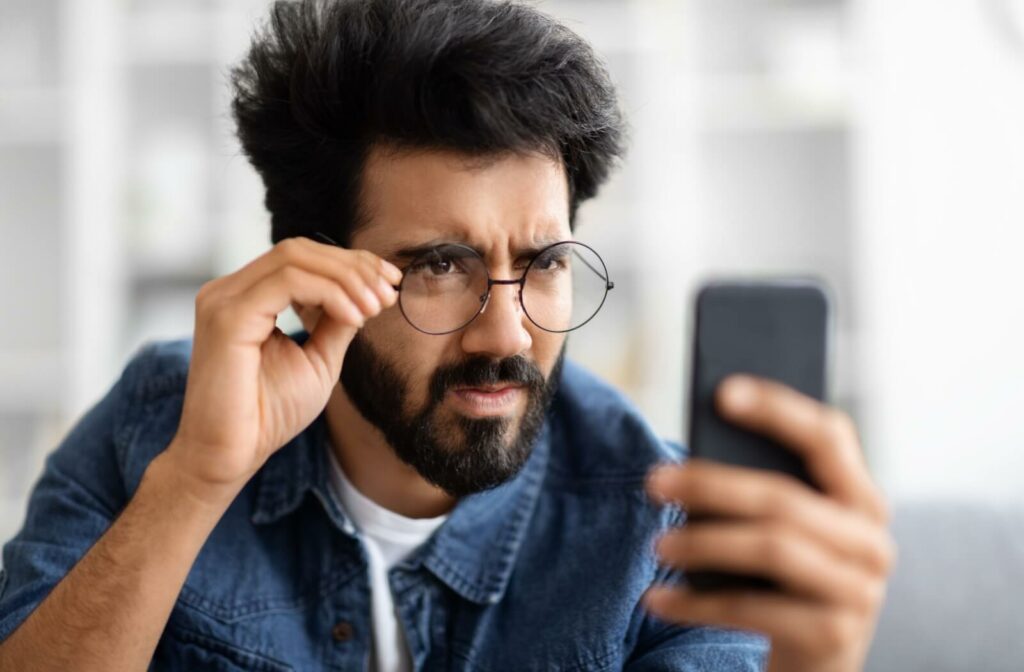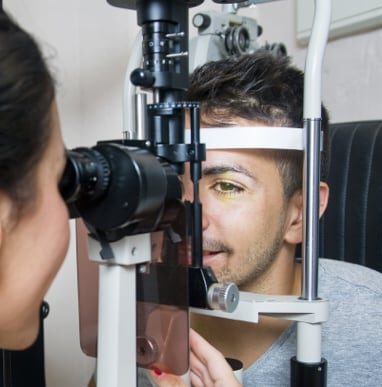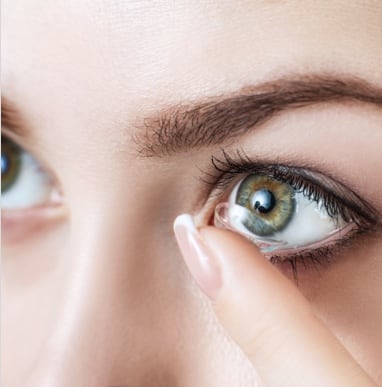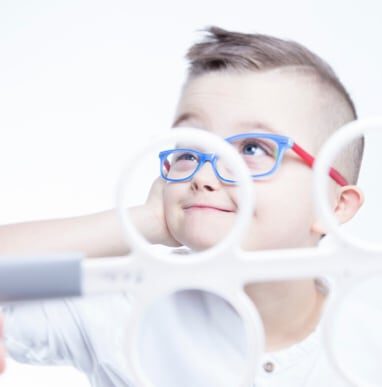You or your child might experience frequent headaches, dizziness, or eye strain without a clear cause. Sometimes, the source of this discomfort isn’t a general health issue but a hidden problem with how the eyes work together (called teaming).
When symptoms like headaches and dizziness arise, they may point toward a condition that standard eye exams may not always detect. Binocular vision dysfunction (BVD) occurs when the eyes struggle to work together as a team, sending slightly different images to the brain. This causes the brain to work overtime, leading to a variety of symptoms.
Understanding Binocular Vision Dysfunction
How the Eyes Work Together
For you to see a single, clear image, both of the eyes need to point to the same spot at the same time. This process, called binocular vision, allows for things like depth perception and focus. Binocular vision relies on complicated teamwork between the muscles of your eyes and your brain.
When your eyes are aligned, this coordination feels effortless. But if there’s even a slight misalignment, your eye muscles must work all the time to correct it. This constant strain is what leads to the discomfort associated with BVD.
When Your Eyes Go Out of Sync
There are 2 common examples of your eyes having trouble working together: Convergence insufficiency and convergence excess. With convergence insufficiency, eyes have trouble turning toward each other to focus on near objects, like a book or a screen. With convergence excess, eyes tend to turn toward each other too much, which means focusing on things nearby can cause eye strain.

Spot the Symptoms of BVD
Visual Symptoms You May Notice
BVD can show up in many ways that directly affect how you or someone you love sees the world. You might notice visual symptoms that come and go, especially after periods of focus. These can include:
- Headaches
- Blurry vision
- Double vision
- Eye strain
- Lack of focus and concentration
- Light sensitivity
- Difficulty with reading
- Trouble with depth perception
Physical Symptoms You May Feel
Because the visual system is closely connected to the balance system, BVD can also cause physical sensations that you may not immediately link to the eyes. The constant effort from your brain to realign your vision can affect your entire body. Some of these symptoms are:
- Lightheadedness
- Dizziness
- Nausea
- Headaches
- Neck, shoulder, and back pain
- A tilted head
- Difficulty walking in a straight line
- Bumping into things
- Balance difficulties
- Motion sickness
- Sinus pressure
How Optometrists Diagnose Eye Misalignment
Common Causes of BVD
Eye misalignment can be present from a very young age, as the visual system develops. In other cases, it can appear after a concussion or other head injury that affects the brain’s ability to coordinate eye movements. Facial unevenness can also contribute to a slight misalignment that the brain has to work hard to overcome.
Beyond a Standard Eye Exam
An eye health exam is important for checking your prescription and overall eye wellness. However, diagnosing BVD requires a different approach that specifically looks at eye alignment and teaming. A skilled eye doctor can use specific tests to measure how your eyes work together and identify even the smallest misalignments.
Conditions BVD Can Mimic
The symptoms of BVD often overlap with other conditions, so sometimes it’s mistaken for other issues. For instance, dizziness could be mistaken for an inner ear problem. Headaches can be assumed to be caused by migraines. Focusing issues in children can be mistaken for learning or attention problems like attention deficit hyperactivity disorder (ADHD). A thorough evaluation of your or your child’s visual system can help identify if BVD is contributing to symptoms you or they might be experiencing.
BVD’s Effect on Daily Life for Different Ages
Challenges for Children and Students
For children, BVD can make schoolwork understandably frustrating. Words on a page might appear to move or blur, which can contribute to having a hard time reading. This can affect a child’s concentration in class, their ability to complete homework, and their performance in sports that require accurate depth perception.
How BVD Affects Adults at Work and Home
Adults with BVD can find it hard to stare at a computer screen for long periods without getting headaches or eye fatigue. Driving, especially at night, can feel disorienting. Crowded places like grocery stores can sometimes trigger dizziness or a feeling of being overwhelmed due to the visual stimulation.
Treatment Options That Can Help
The Role of Corrective Lenses
One way to manage BVD symptoms is with corrective lenses. Unlike standard lenses that correct the way the light focuses, prism lenses help bend light before it enters your eyes. This realignment helps your brain merge the images from both eyes into one clear picture without as much straining.
The Role of Vision Therapy
Vision therapy is another practical approach for improving eye coordination. It’s like physical therapy for your eyes and brain. A personalized program of activities can help strengthen the connection between the eyes and brain, improving visual skills and reducing symptoms over time.
Your Community Optometrists in Illinois
Longtime community members know we truly care about every person who walks through our doors. At Vision Care Center, we focus on how your eyes function as a complete system. We’re here to serve your vision for decades to come.
If these symptoms sound familiar to you or a loved one, help is available. Schedule a consultation with an eye doctor in Peoria, Illinois, to have your eye alignment assessed. We’re ready to help you find a clearer, more comfortable way of seeing your world.












